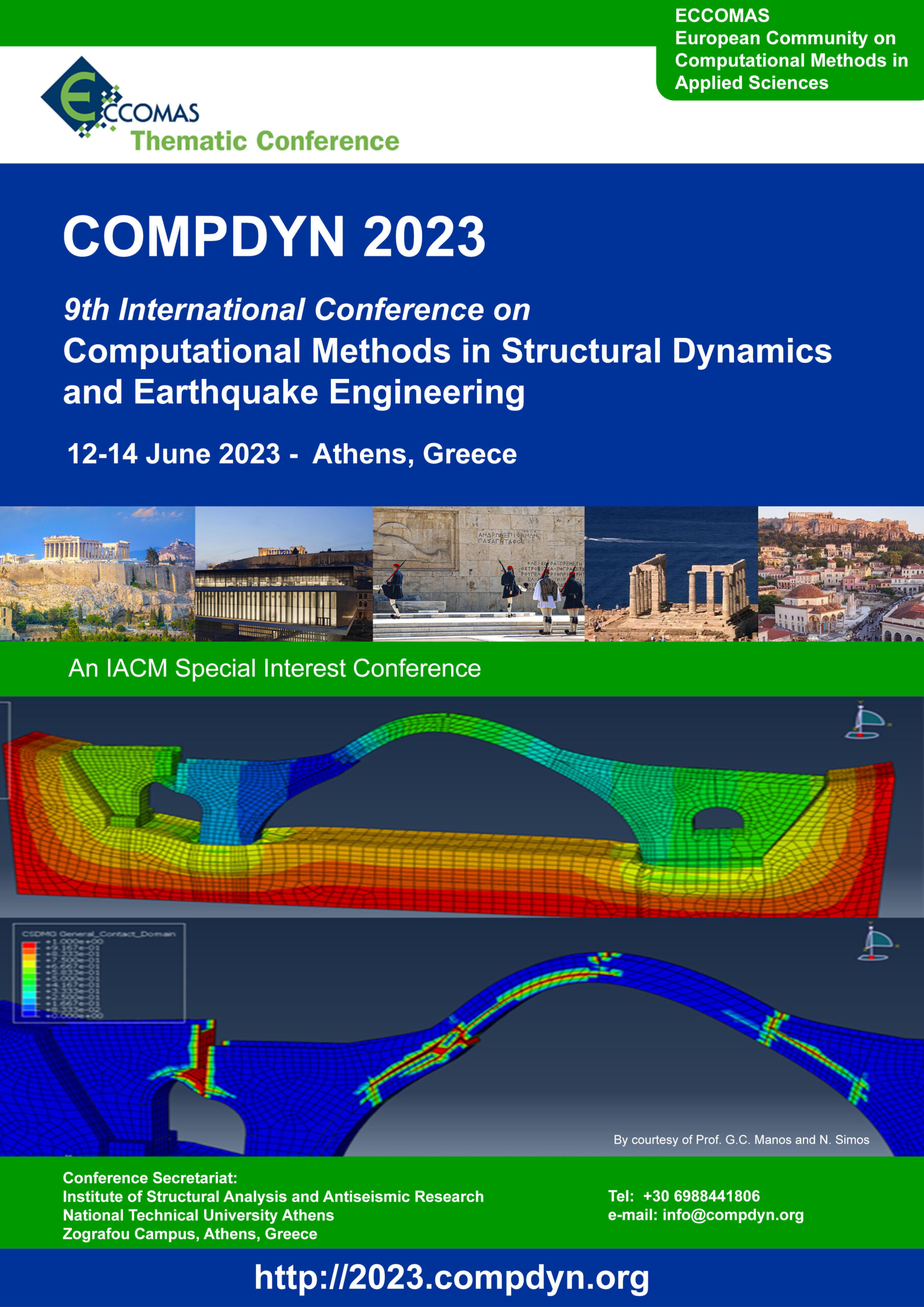Recently, the S4H Team presented five conference papers at the 9th International Conference on Computational Methods in Structural Dynamics and Earthquake Engineering, COMPDYN2023, held in Athens, Greece.
In the first paper, titled “Seismic Assessment of Typological Masonry Buildings Using Simulated Ground Motion Records: A Case Study for Azores, Portugal“, researchers utilised stochastic finite-fault ground motion simulation to replicate earthquake scenarios specific to the Azores Plateau’s bedrock. Considering the stochastic nature of input-model parameters, including source and path attenuation effects, the simulations covered a wide range of moment magnitude and source-to-site distance resulting from active fault ruptures. The study employed equivalent frame models to assess the structural response, deriving analytical fragility curves from the generated ground motion datasets. The findings highlight the vulnerability of the analysed structures to seismic actions in the region.
In the second paper, titled “Generative Modelling and Seismic Assessment of Ancient Temples: The Temple of Vesta (Tivoli)”, a new method is proposed to generate digital models of architectural heritage when geometric information is unavailable. The Temple of Vesta in Tivoli serves as a case study, using etchings by Francesco Piranesi to identify the architectural layout and repetitions. A Generative Program algorithm is applied for temple parametrisation. The geometrical model is imported into a Finite Element environment for nonlinear time history simulations. Seven seismic records are used, scaled according to the Italian seismic code at the limit state Safeguard of human life. The numerical model highlights the consistent impact of local failure mechanisms on the structure.
The third paper, titled “Selection and Scaling Validation of Ground Motions According to TBEC-2018 for the Seismic Assessment of Masonry Structures”, explores earthquake time history selection and scaling for analysing masonry structures’ response, following TBEC-2018 guidelines. Ground motion simulations are proposed for regions with limited seismic networks or insufficient data. The selection and scaling processes are performed based on TBEC-2018 recommendations, considering seismological characteristics. Optimal scaling factors are determined using the Differential Evolution Method (DEM). The study conducts non-linear dynamic analyses using two sets of records and focuses on the OOP behaviour of a U-shaped masonry prototype. The results demonstrate the potential of simulated ground motion records in assessing the seismic performance of masonry structures.
The fourth paper, titled “Energy Loss Mechanisms of Rocking Blocks: Experimental Observations”, presents recent results of the experimental campaign of S4H on rocking blocks. More specifically, it summarises an extensive experimental campaign of free-rocking tests of limestone blocks, with a particular focus on the energy losses of the motion. The free-rocking motion is thoroughly analysed, while attention is also given to three-dimensional effects. Finally, the coefficient of restitution is experimentally quantified and compared with both previous theoretical and experimental results gathered from the literature.
The fifth paper, titled “A Two-step Approach for the Seismic Assessment of Masonry Structures Accounting for the Actual Masonry Pattern“, presents a two-step approach to conduct fast in-plane numerical simulations of masonry structures. The first step involves a block-based limit analysis that takes into account the actual masonry pattern. Afterwards, an algorithm identifies the distinct portions of the structure which compose the collapse mechanism (referred to as macroblocks). In the second step, a simplified structure composed of these macroblocks is analysed in a Finite Element Method (FEM) environment. The proposed approach is preliminary tested on two structural-scale benchmarks made of dry-stack masonry, showing promising results.
The main outcomes of these studies can be found in the following links:
First Paper:
https://2023.compdyn.org/proceedings/pdf/20451.pdf
Second Paper:
https://2023.compdyn.org/proceedings/pdf/20725.pdf
Third Paper:
https://2023.compdyn.org/proceedings/pdf/21393.pdf
Fourth Paper:
https://2023.compdyn.org/proceedings/pdf/20724.pdf
Fifth Paper:
Share this post
